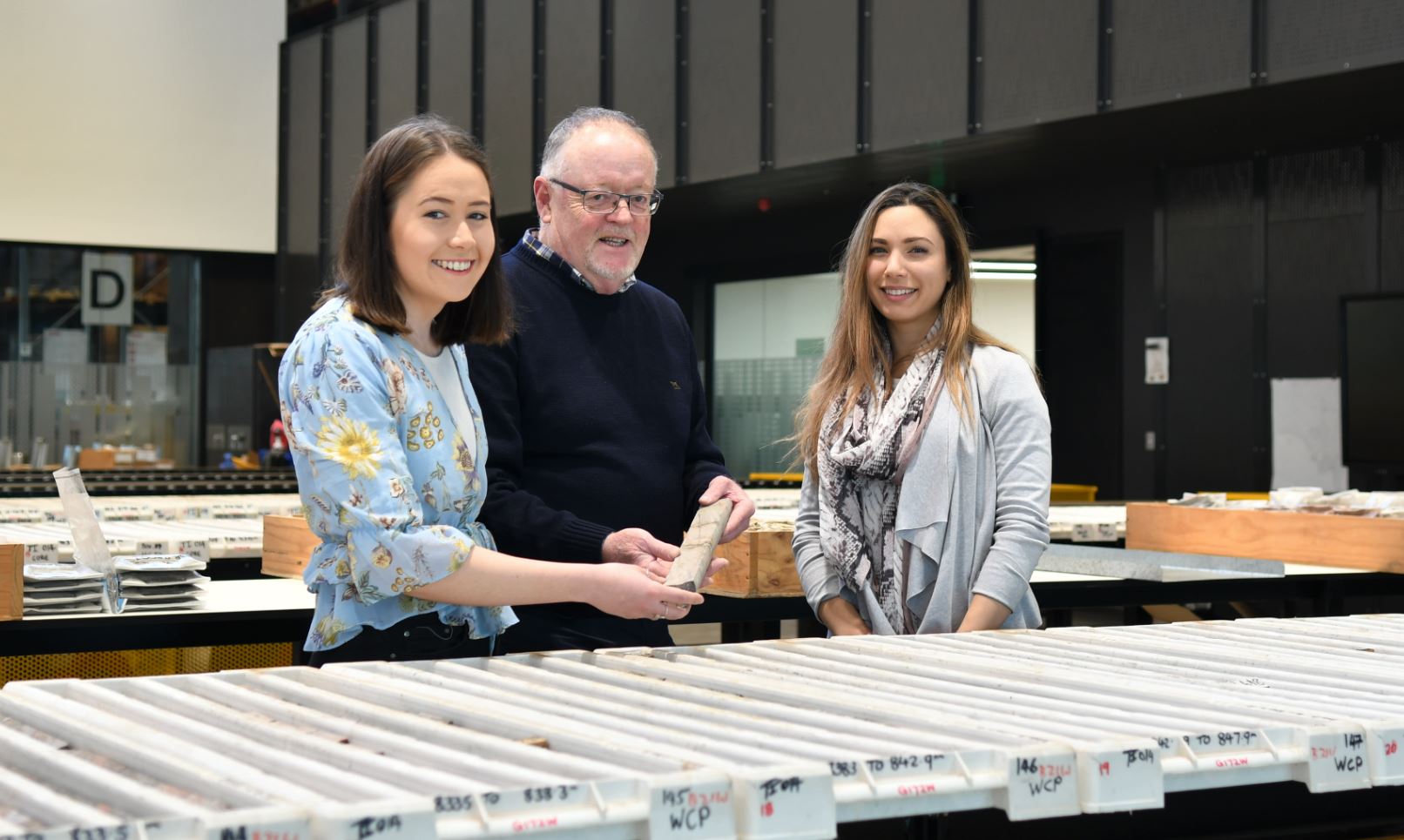
Flinders University trainee teachers are ‘bridging the gap’ with industry placements that are helping them in classrooms of the future.
For the past two years, student science teachers are getting out in the ‘real world’ with businesses as part of a University-STEM Industry Engagement program, helping to stimulate their enthusiasm for teaching STEM subjects and exert a positive influence among South Australian secondary students to pursue further studies in science subjects.
Master of Teaching (secondary) students Johanna Kemplay-Hill and Christina Pappas, for example, revelled in the opportunity to go ‘on site’ with SIMEC Mining as part of the before they graduated.
They were among more than 50 student teachers of secondary science to undertake three short industry placements before commencing their final teaching practicum. More Flinders student teachers will do industry placements this year.
Ms Kemplay-Hill says linking industry exposure to classroom learning “allowed me to gain a deeper understanding of the types of industries I am preparing my students for”, particularly seeing different aspects of mining which incorporate many science and engineering professions.
“In schools, the STEM (Science, Technology, Engineering and Mathematics) acronym describes various student subjects but experiencing industry through SIMEC Mining allowed for me to form my own definition: ‘The collaboration of Science, Technology, Engineering and Maths to solve applied problems’,” says Ms Kemplay-Hill, who is now working in a country high school.
“In future I will definitely make contact with industries to provide these real-life opportunities for my students.”
Ms Pappas also says her time with SIMEC Mining’s operations near Whyalla gave her invaluable insights into how theory and scientific knowledge is applied in an industry situation.
“We were able to take what we learned from SIMEC and create a STEM unit for students, encouraging them to solve a problem facing the industry as part of a team in the field,” she says.
“It not only opened my eyes to how science applies across the spectrum, but will help to inform my future pupils about career options and to even pursue a career in mining or other STEM area.”
‘Bridging the Gap: Connecting science education with the real world’ is an innovation in pre-service teacher education that was established with State Government funding at Flinders University in collaboration with schools and industry partners.
SIMEC Manager Exploration Geoff Johnson says the company is pleased to have been involved with the program since it started three years ago.
Bridging the Gap project leader Dr Carol Aldous, from the College of Education, Psychology and Social Work at Flinders University, says the university-industry engagement has had significant impact on pre-service teachers of secondary science and flow-on effects on students in schools.
Dr Aldous says the intention of the industry placements is to further the student teachers’ deep understanding of the connections between theoretical science knowledge and its application in society.
It also increased student teacher capacity to innovate new approaches to learning and teaching – measured via their Confidence, Teaching and learning, Views of STEM and Creativity in STEM.
The project’s impact on student teachers was assessed by focus group interview and questionnaires administered before and after their industry visits.
Minister for Innovation and Skills David Pisoni says the program connects future teachers with industry, bringing real-life examples into high school classrooms.
“With $90 billion in naval and defence projects, and as our economy is diversifying into new and emerging industries such as space, cybersecurity, digital services, health and renewable energy, teachers with contemporary, real-world insights on the application of STEM skills are essential,” Mr Pisoni says.
A Bridging the Gap review found that the student teachers’ view of STEM was positively impacted through their industry placements.
Models used for the report indicate that student teachers involved in the Bridging the Gap are directly influencing secondary students’ attitudes toward science, and having an indirect influence through the secondary students’ perception of science activities they were currently involved in.
Findings in the report also found that secondary students’ perception of STEM was also positively impacted. The research model indicates that student attitudes towards science are a large predictor of future STEM career intention.
This was examined using the OECD’s programme for International student assessment (PISA) 2006/2015, covering science attitudes, engagement and motivation, both before and after the teaching practicum.
It found that the students’ perceptions of science increased across all 14 questions asked in the assessment, which includes enjoyment, motivation, the value of science and preparation for a science-related career.







